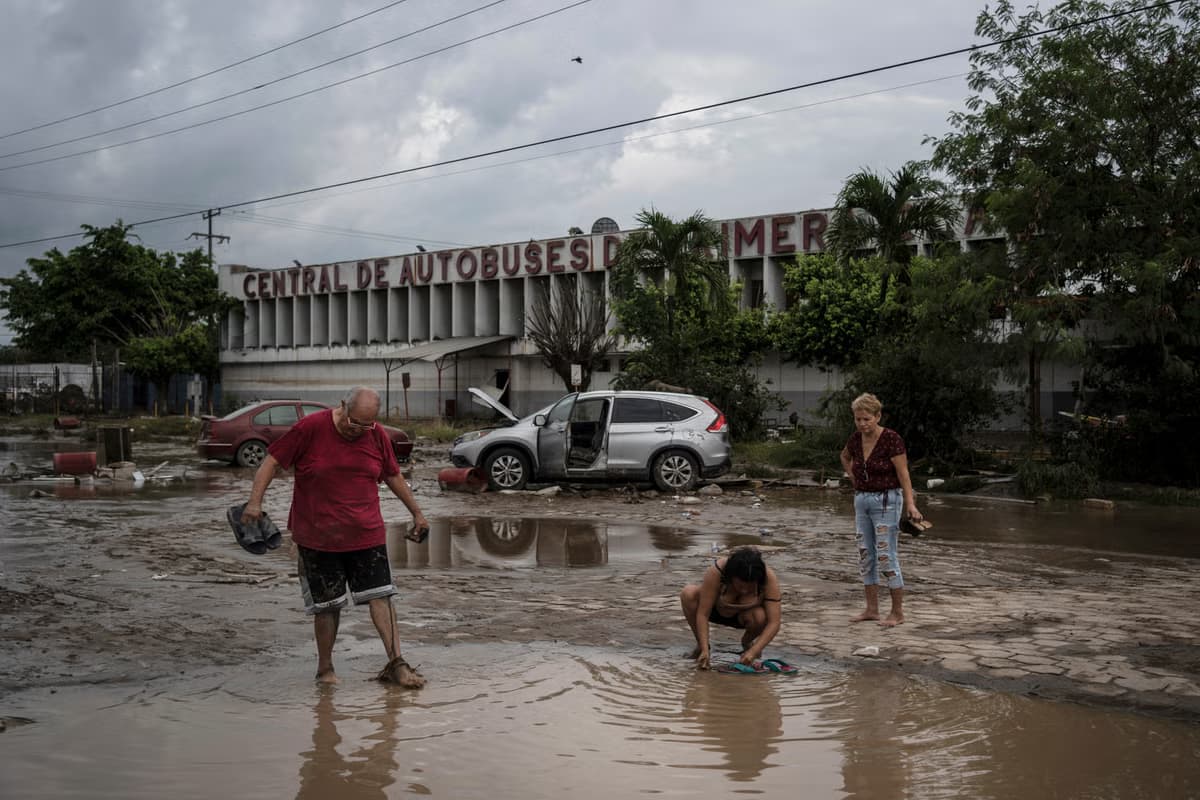Loading News Article...
We're loading the full news article for you. This includes the article content, images, author information, and related articles.
We're loading the full news article for you. This includes the article content, images, author information, and related articles.
Torrential rains in east-central Mexico have claimed at least 64 lives and left 65 missing, with widespread flooding and oil contamination posing significant challenges to recovery efforts in affected regions like Poza Rica.

The death toll from last week's torrential rains and subsequent flooding in east-central Mexico has tragically risen to 64, with an additional 65 people reported missing as of Monday, October 13, 2025. The severe weather, attributed to two dissipated tropical storms, Priscilla and Raymond, has caused extensive damage across five states, impacting an estimated 100,000 homes.
In Poza Rica, an oil-producing town in Veracruz state, residents are grappling with not only flood damage but also a thick residue of oil that has contaminated homes and streets. Lilia Ramírez, a resident, described finding her walls streaked with oil after floodwaters, a phenomenon she noted had never occurred before despite previous heavy rains. This contamination complicates the already arduous cleanup process for communities devastated by the rising waters of the Cazones River, which overflowed its banks.
Mexico has experienced particularly heavy rainfall throughout 2025, with a rainfall record set in the capital, Mexico City. The recent deluges have triggered numerous landslides, swept away roads and bridges, and isolated many communities. President Claudia Sheinbaum has acknowledged the severity of the situation, deploying thousands of troops and promising a scaled-up government response.
Civil Defense Coordinator Laura Velázquez Alzúa confirmed the rising casualties and missing persons during a press briefing by President Sheinbaum. The Mexican government has pledged sufficient resources for the emergency period, with President Sheinbaum stating that aid would not be withheld. Over 10,000 troops, along with rescue equipment and vehicles, have been deployed to assist in rescue efforts and aid distribution.
Residents like Lilia Ramírez in Poza Rica highlight the immediate and long-term challenges. The unexpected oil contamination adds a layer of complexity to recovery, raising questions about environmental impact and the responsibilities of the state oil company, Pemex, in managing such risks during extreme weather events. Shelters have been opened to accommodate those displaced from their homes, and military personnel are ferrying food and water to cut-off communities.
The ongoing search operations are expanding to communities that were previously inaccessible due to landslides. The oil residue in Poza Rica presents a significant environmental and health hazard, requiring specialized cleanup efforts beyond typical flood recovery. The scale of destruction suggests a prolonged recovery period for affected regions, with thousands still without running water or electricity.
The full extent of the damage and the number of casualties may still rise as rescue teams reach more isolated areas. The long-term environmental impact of the oil contamination in Poza Rica and the measures to prevent future occurrences remain critical unanswered questions. The timeline for restoring essential services and rebuilding infrastructure in the most severely affected areas is also uncertain.
President Sheinbaum visited affected communities in Puebla and Veracruz on Sunday, October 12, 2025, promising a swift government response. Search and rescue operations are ongoing, with efforts focused on reaching cut-off communities. The government plans to conduct a census of affected individuals to facilitate aid distribution.
Observers will be closely watching the progress of search and rescue missions, the effectiveness of aid distribution, and the government's strategy for addressing the unique challenge of oil contamination in Poza Rica. The long-term recovery and rebuilding efforts in the affected states will also be a key focus.
Keep the conversation in one place—threads here stay linked to the story and in the forums.
Other hot threads
E-sports and Gaming Community in Kenya
Active 6 months ago
Popular Recreational Activities Across Counties
Active 6 months ago
The Role of Technology in Modern Agriculture (AgriTech)
Active 6 months ago
Investing in Youth Sports Development Programs
Active 6 months ago